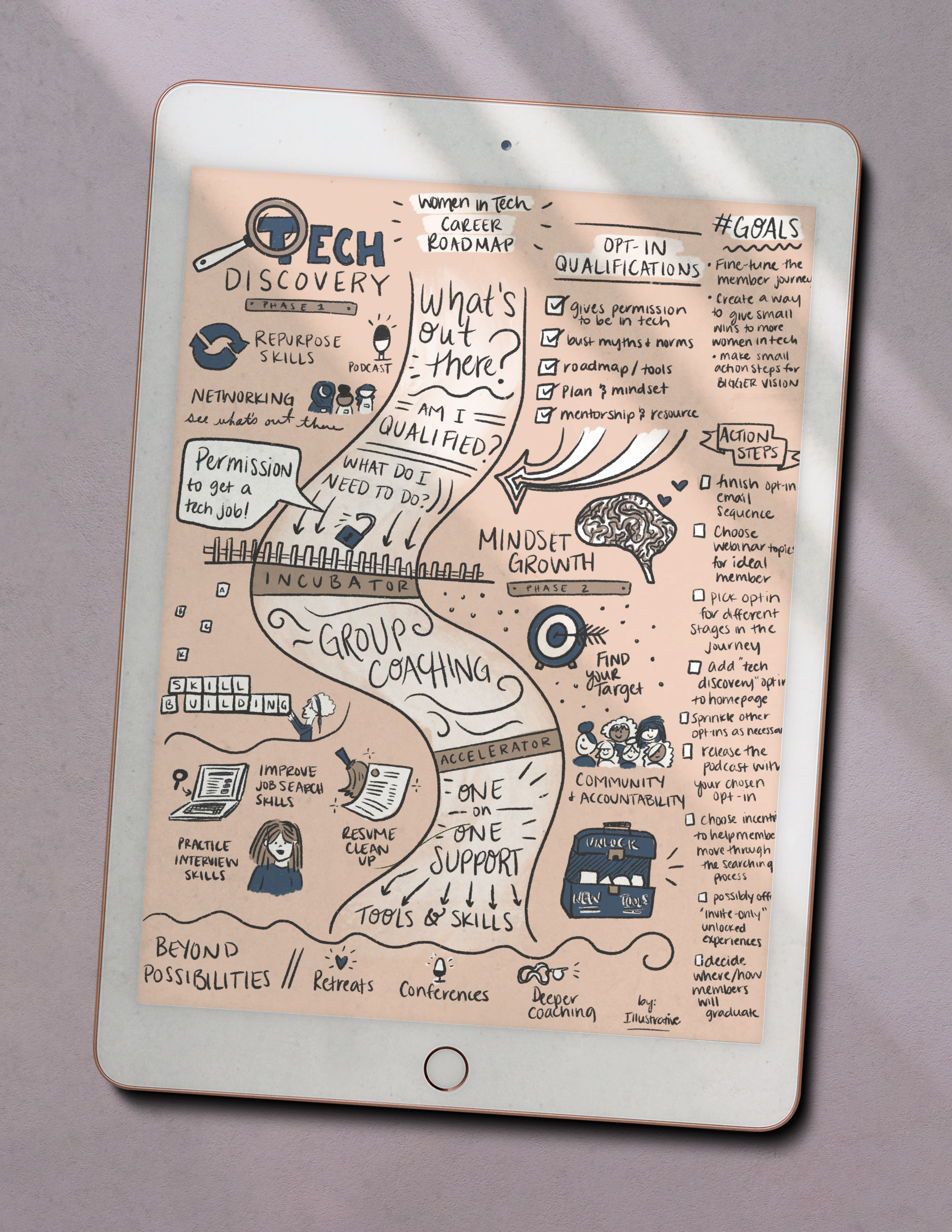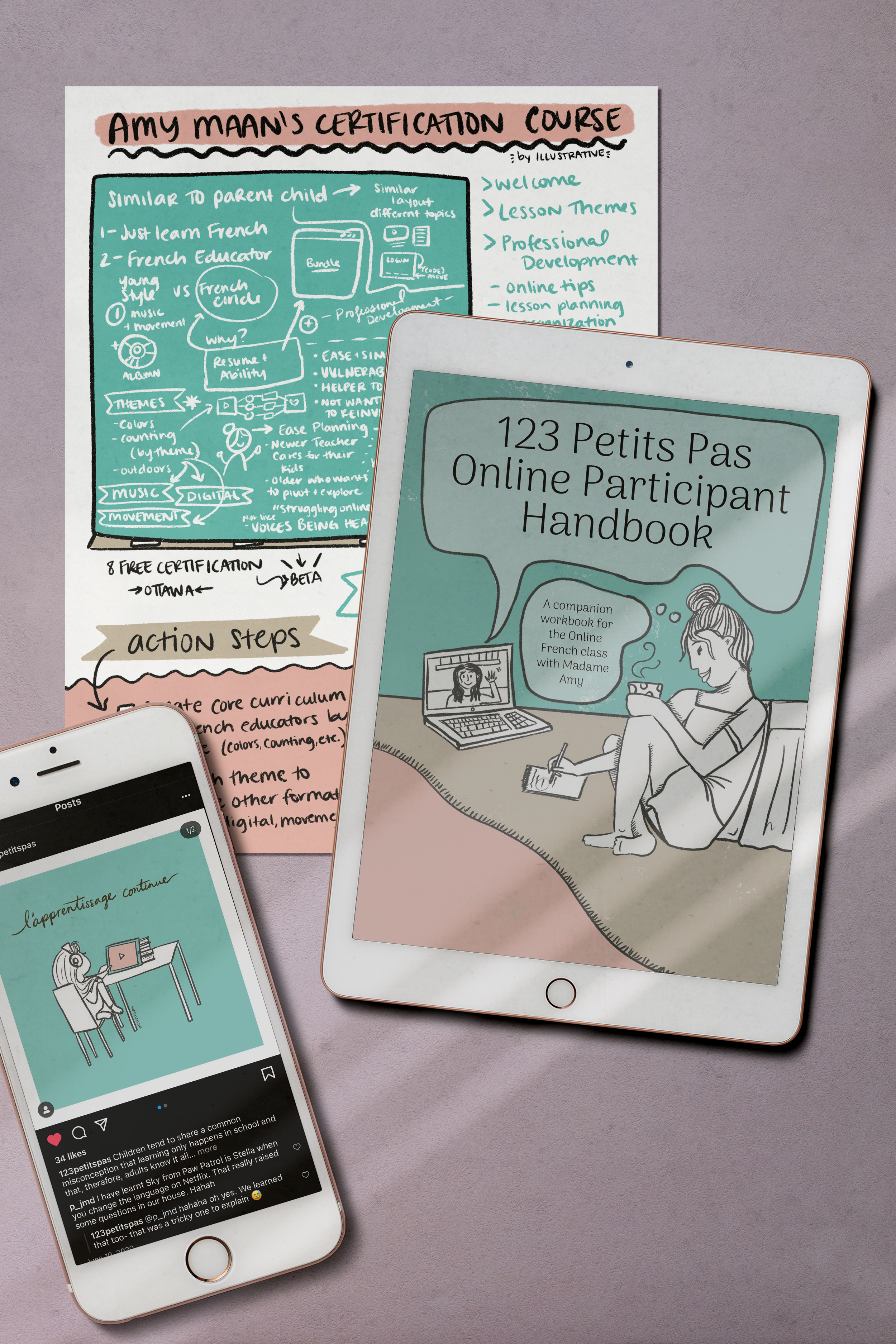Vision Mapping
Role: Creator and Graphic Facilitator | Branding Process • Communication • Client Experience
PROBLEM
The onboarding process with my clients used to get jumbled and halfway through the project we needed to regroup and make a bunch of edits. This led to projects taking longer than planned and clients losing trust in the process.
IDEAS & PROPOSED SOLUTIONS
My first idea was to use visual building blocks as a way of making proposals. I noticed that I got more buy-in, less confusion halfway through a project and more upsells when my clients had a visual of the process. They also loved sharing that visual on social media. I then tried adding proposal sessions where I drew out the process and allowed them to add-on, take away and ask questions during the process to make the final proposal their idea. Clients asked for those sessions throughout the process. We also tended to use analogies in the process to brainstorm so I added them to the beginning. I researched graphic facilitation and visual note taking to tweak until this became an integral piece of my branding and illustration process, which I call Vision Mapping.



OUTCOMES
Now I use vision-mapping in all of my client projects and as a stand-alone service. All vision maps start with an intention in the top corner with a blank action items list underneath that we fill out throughout the session. On the left side of the page I draw out our discussion around the intention of the initial clarity call.
This system works well for finding a customer journey, business structure, product ideas, and niching down. I usually use an analogy to get the facilitation started. Now my clients ask for larger projects, come back to work with me more often and share about the process with others more which has led to more referrals (something you’ll be able to benefit from too when we add visual aids to your process!
You want to vision map now don’t you? Let’s do it! >> Fill out this intake form to get started:
